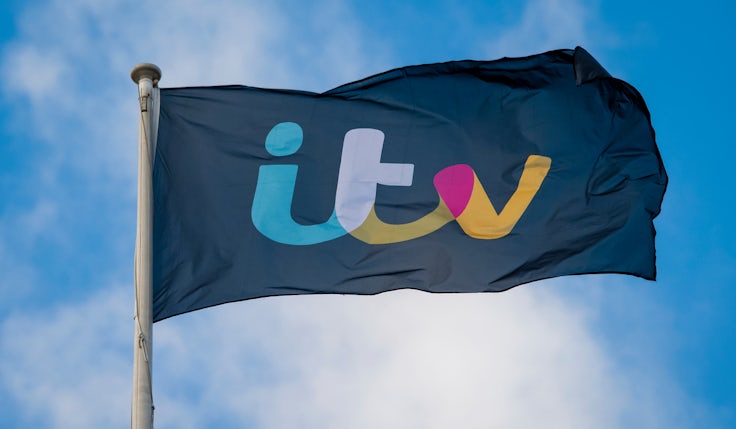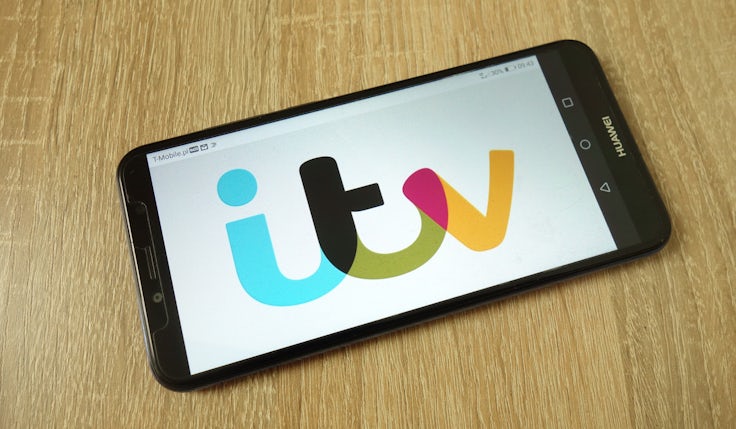ITV warns of declining ad revenue in 2023 despite rapid digital growth
ITV’s 2022 results show advertisers continuing to shift spend from linear to digital TV advertising, as they approach the first half of 2023 with “caution”.
 ITV is anticipating a “challenging” first half of 2023 in terms of advertising revenue, forecasting an 11% decline in the first quarter compared to last year. By April, the commercial broadcaster expects total ad revenue to be down 10-15%.
ITV is anticipating a “challenging” first half of 2023 in terms of advertising revenue, forecasting an 11% decline in the first quarter compared to last year. By April, the commercial broadcaster expects total ad revenue to be down 10-15%.
This is despite an expected 25% uplift in digital advertising revenues over the quarter, following growth of 17% to £343m across the year to 31 December. With advertisers reducing spend on linear TV, the business has reported a 1% decline in total ad revenue for 2022, dropping to £1.93bn.
Last year was nevertheless ITV’s second highest advertising revenue year ever after 2021, despite the impact the war in Ukraine and cost of living crisis has had on advertisers. This will in part have been achieved due to the inflating price of TV advertising, which CEO Carolyn McCall expects to continue “as mass reach becomes increasingly scarce”.
Speaking to media today (2 March), McCall claimed budget decisions for the first quarter had likely been made in the third and fourth quarter of last year, “when the news flow was really very negative”.
She added: “The conversations we’re having with advertisers at the moment are that they are definitely protecting profits by being very tight on all their costs… However, they will also talk to us about the improving macroeconomic indicators that have been emerging recently. There’s a growing business optimism.
“While in the short term the advertising outlook is challenging, we expect linear advertising revenues to remain resilient and continue to be highly cash generative.”
Most advertisers think the second half will be easier than the first half. But that remains to be seen.
Carolyn McCall, ITV
Advertisers in the travel and tourism industry are particularly “buoyed up” by the opportunity to get people travelling after the pandemic, she said. Last year the sector increased its advertising spend with ITV by 59%. To that, McCall added that the automotive industry is expressing more optimism in conversations as its supply chain issues come to an end, as well as entertainment, telecoms and retail.
“Retailers are actually doing a lot better than people anticipated they would do and are actually managing how they price and are trying to make things easier for customers. A lot of advertising messages are around that, about making life easier for people, and I think they see that continuing through the year,” she said.
However, she believes there remains an “element of caution” for all advertisers, adding: “Most advertisers think the second half will be easier than the first half. But that remains to be seen.”
ITV’s results fall in line with expectations formed last year about how media spend would shape up in 2023 amid the ongoing macroeconomic uncertainty. A survey of 59 leading advertisers by ISBA and Ebiquity last autumn found over two-thirds (67%) were planning to cut spend on linear TV this year, with a fifth to do so by more than 10%. The leaders surveyed were responsible for more than £1.5bn in annual UK ad spend.
At the same time budgets for advanced and connected TV were expected to grow. More than half (53%) of brands planned to increase spend, lured by the promise of flexibility and targeting alongside TV’s brand building credentials, as well as access to hard to reach audiences who are increasingly watching TV content via on-demand platforms.‘Sweat every single pound’: How will media spend shape up in 2023?
Meanwhile, the Advertising Association and Warc ad spend forecasts predict 0.5% growth in TV spend overall in 2023, with video-on-demand spend (VOD) to rise 7.2%.
According to the CEO of TV marketing body Thinkbox, Lindsey Clay, the data indicates a “rebalancing” in spend between linear TV and broadcaster video-on-demand (BVOD), which “has been happening for a while”. In future it seems likely all TV plans among major advertisers will combine linear and BVOD to achieve the broad reach linear TV was formerly able to offer alone.
Shift to digital
Overall, ITV’s total digital revenues were up 18% to £411m in 2022, with 400 new digital advertisers. Since launching in December, ITV’s online streaming service ITVX has attracted 1.5 million new registrations, saw total streaming hours grow 69%, and drove a 94% uplift in the streaming hours of “lighter” viewers compared to predecessor ITV Hub the previous year.
Across 2022 as a whole, monthly active users increased 6% to 10.5 million, with UK paying subscribers up 17% to 1.4 million. Total streaming hours increased 9% to 1.14 million.
By 2026, the broadcaster expects ITVX to double its monthly active users to 20 million, double total streaming hours to 2 billion, double UK subscribers to 2.5 million, and increase digital revenues to at least £750m. McCall said the business remains “confident” in delivering this revenue target.
Due in large part to its sizable investment in content and ITVX “to drive future growth”, adjusted EBITDA in the media and entertainment business was down 22% to £464m. ITV’s overall adjusted EBITDA fell 12% to £717m.
Nevertheless, McCall has promised to “continue to invest” to support the “long term profitability” of the broadcaster and meet its targets for the next three years. The business expects around two thirds of its total revenues to come from digital revenues and ITV Studios by 2026.
Last year, ITV CMO Jane Stiller told Marketing Week the business would be increasing its paid media investment by 50% in 2023 to support ITVX’s growth.ITV to raise media spend by 50% in 2023 to grab ‘big opportunity’ for ITVX
Confident the cost of living crisis offers a “big opportunity” for a free video-on-demand platform to win viewers from the likes of Netflix and Disney+, ITV will be raising spend on TV advertising across non-ITV channels, as well as out-of-home (OOH), paid social and influencers.
From a marketing perspective, the main goal of the investment is to get ITVX into the top three on-demand services in terms of consideration, Stiller said. According to YouGov’s BrandIndex, predecessor ITV Hub lagged considerably behind some of its rivals in November with a score of 29.2, versus Netflix’s 61.8, Amazon Prime Video’s 48.7 and a score of 37.3 for Disney+.
While Stiller couldn’t put an exact figure on 2023 spend, ITV invested £45m in its fourth quarter launch campaign.








Comments